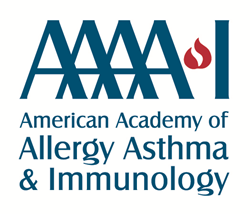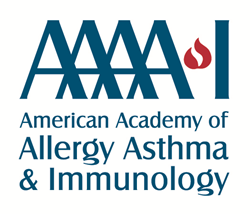
The study is particularly important because it involves a simple intervention with low barriers to implementation for providers and patients that does not require changes in the patient’s underlying therapy.
PHOENIX (PRWEB)
February 26, 2022
A patient-activated, reliever-triggered inhaled glucocorticoid strategy, combined with usual care, reduces asthma exacerbations and improves asthma control and quality of life in African American and Hispanic/Latinx adult patients with poorly controlled asthma. The results of the Person Empowered Asthma Relief (PREPARE) trial are being presented at the 2022 Annual Meeting of the American Academy of Allergy, Asthma & Immunology (AAAAI) and are being simultaneously published in The New England Journal of Medicine.
The resulting paper, Reliever-Triggered Inhaled Glucocorticoid in Black and Latinx Adults with Asthma, funded by the Patient Centered Outcomes Research Institute through a grant to the Brigham and Women’s Hospital, compared the addition of a patient-activated reliever-triggered inhaled
glucocorticoid strategy (hereafter referred to as intervention group) to usual care alone. The real-world study recruited 603 African American and 598 Hispanic/Latinx patients with clinically diagnosed asthma, aged 18-75 years old. The study was conducted in primary care and specialty practices across the continental United States and in Puerto Rico.
Patients who were recruited had to meet one of the following stipulations: be prescribed daily inhaled glucocorticoids with or without long-acting β2-agonist (LABA) and an Asthma Control Test (ACT) score of 19 or lower, which indicates asthma is not well controlled, or an asthma exacerbation leading to overnight hospitalization or use of systemic glucocorticoids within the past year. The annualized rate of severe asthma exacerbations was used as the primary endpoint in the study. Patients received one instructional visit and monthly questionnaires over a period of 15 months.
The annualized rate of severe asthma exacerbations was 0.69 in the intervention group compared to 0.82 in the usual care group, which translates to a 15.4% lower risk of severe asthma exacerbations in the intervention group. In the intervention group, ACT scores improved 3.4 points compared to 2.5 in the usual care group. Asthma Symptom Utility Index (ASUI) scores, which indicate asthma-related quality of life, also increased by 0.12 points for the intervention group compared to 0.08 points in the usual care group. Additionally, the rate of work/school/usual activity days missed was 13.4 in the intervention group and 16.8 in the usual care group.
“What’s unique about this study is we’ve focused exclusively on patient populations that face significant disparities in asthma outcomes,” said Juan Carlos Cardet, MD, who is presenting this study on behalf of the research team at the AAAAI meeting. Elliot Israel, MD, FAAAAI, Professor of Medicine at Harvard Medical School and the principal investigator and author of the study, pointed out that “the study is particularly important because it involves a simple intervention with low barriers to implementation for providers and patients that does not require changes in the patient’s underlying therapy.”
Patients only needed to attend a single visit for the study, and the effectiveness of the intervention group persisted for 15 months. The strategy being studied with this research could be easy to implement in populations with disproportionately high asthma morbidity, compared to other strategies that require a greater amount of time and resources.
Of the patients in the study, 12.2% experienced serious adverse events. Adverse events were experienced at a similar rate between the two different groups, with the most common adverse events being asthma, infection or infestation, and cardiac events. In the intervention group, 11.8% of participants were hospitalized compared to 11.5% in the usual care group. The study did not find any statistically significant safety signals in the intervention group.
Post hoc analyses were performed looking at medication use and survey results from the study period. The data showed that in the intervention group, patients used 1.1 more inhalers containing inhaled glucocorticoid in a year compared to the usual care group. In the intervention group, patients refilled fewer quick-reliever metered-dose inhalers than usual group patients, and reported fewer months using quick-reliever nebulizers compared to usual care patients.
Visit aaaai.org to learn more about asthma. Research presented at the AAAAI Annual Meeting, February 25-28 in Phoenix, Arizona, is published in an online supplement to The Journal of Allergy and Clinical Immunology.
The American Academy of Allergy, Asthma & Immunology (AAAAI) represents allergists, asthma specialists, clinical immunologists, allied health professionals and others with a special interest in the research and treatment of allergic and immunologic diseases. Established in 1943, the AAAAI has more than 7,100 members in the United States, Canada and 72 other countries. The AAAAI’s Find an Allergist/Immunologist service is a trusted resource to help you find a specialist close to home.
Share article on social media or email:

